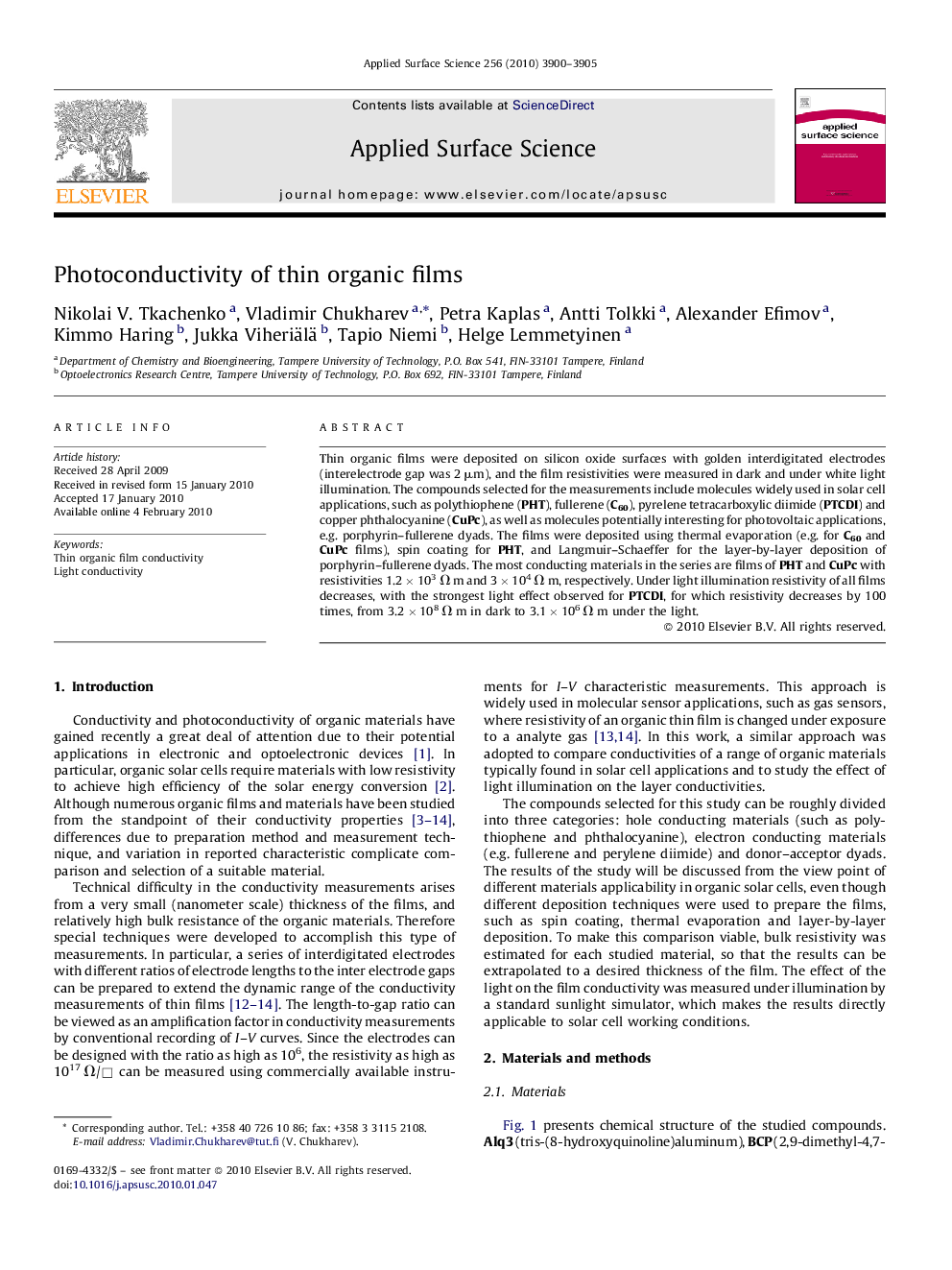| Article ID | Journal | Published Year | Pages | File Type |
|---|---|---|---|---|
| 5360520 | Applied Surface Science | 2010 | 6 Pages |
Abstract
Thin organic films were deposited on silicon oxide surfaces with golden interdigitated electrodes (interelectrode gap was 2 μm), and the film resistivities were measured in dark and under white light illumination. The compounds selected for the measurements include molecules widely used in solar cell applications, such as polythiophene (PHT), fullerene (C60), pyrelene tetracarboxylic diimide (PTCDI) and copper phthalocyanine (CuPc), as well as molecules potentially interesting for photovoltaic applications, e.g. porphyrin-fullerene dyads. The films were deposited using thermal evaporation (e.g. for C60 and CuPc films), spin coating for PHT, and Langmuir-Schaeffer for the layer-by-layer deposition of porphyrin-fullerene dyads. The most conducting materials in the series are films of PHT and CuPc with resistivities 1.2 Ã 103 Ω m and 3 Ã 104 Ω m, respectively. Under light illumination resistivity of all films decreases, with the strongest light effect observed for PTCDI, for which resistivity decreases by 100 times, from 3.2 Ã 108 Ω m in dark to 3.1 Ã 106 Ω m under the light.
Related Topics
Physical Sciences and Engineering
Chemistry
Physical and Theoretical Chemistry
Authors
Nikolai V. Tkachenko, Vladimir Chukharev, Petra Kaplas, Antti Tolkki, Alexander Efimov, Kimmo Haring, Jukka Viheriälä, Tapio Niemi, Helge Lemmetyinen,
